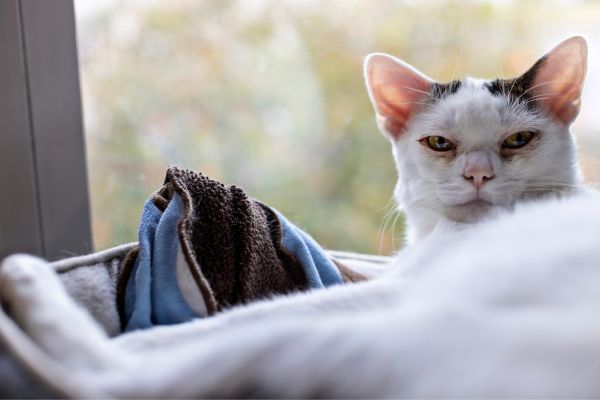Cats are known for their meticulous grooming habits, but even the cleanest feline can suffer from ear issues. One of the most concerning signs for any cat owner is noticing a discharge coming from their pet’s ears. Cat ear infection discharge is often a symptom of an underlying problem that requires prompt attention. Understanding the causes, recognizing the symptoms, and knowing how to address the issue are crucial for ensuring your cat’s comfort and health.
🐾 Take Care of Your Pet’s Health Today!
If you’re noticing signs like cat ear infection discharge or other health issues, don’t wait to take action. Trust Puainta – a brand driven by passion, professionalism, innovation, and sustainability – to deliver safer, more effective medicines for your pet’s healthcare needs.
💌 Contact Us: [email protected]
📍 US Headquarters: 134 Nebraska, Memphis, TN 38106
🌱 With eco-friendly practices and scientifically-backed solutions, Puainta ensures your furry friends receive human-grade care while protecting the planet.
What Does Cat Ear Infection Discharge Look Like?
Cat ear infection discharge can vary in appearance depending on the cause of the infection. It may range from a light yellow or brownish waxy residue to a thick, dark, and foul-smelling substance. Some owners describe it as resembling coffee grounds, which is often a telltale sign of ear mites. In more severe infections, the discharge may be accompanied by pus, bleeding, or crusting around the ear canal. Observing these signs is important because they provide clues to the severity and type of infection affecting your feline companion.
Common Causes of Cat Ear Infection Discharge
Several factors can lead to cat ear infection discharge, each requiring specific care and treatment. One of the most common causes is an infestation of ear mites. These tiny parasites irritate the ear canal, prompting inflammation and the production of dark, crumbly discharge.
Bacterial and yeast infections are also frequent culprits. They can develop when a cat’s natural defenses are compromised due to allergies, foreign objects in the ear, or excessive moisture. Allergies to food or environmental triggers such as pollen can lead to chronic ear inflammation and recurring discharge.
Sometimes, polyps or tumors within the ear canal cause blockage and create an environment where infections thrive. Trauma or scratches to the ear can also introduce bacteria, leading to noticeable discharge. Identifying the underlying cause is vital to providing effective treatment and preventing recurrence.
Recognizing Symptoms Accompanying Cat Ear Infection Discharge
In addition to the visible discharge, cats with ear infections often exhibit other behavioral and physical signs. They may shake their heads frequently or scratch at their ears in an attempt to relieve discomfort. You might notice redness, swelling, or a foul odor emanating from the affected ear.
Some cats become unusually irritable or withdrawn due to pain, and severe cases can even result in loss of balance or a tilted head. Observing these symptoms alongside the presence of discharge can help pet owners recognize that veterinary care is urgently needed.
Why Prompt Veterinary Attention Is Essential
While some cat owners may be tempted to clean their pet’s ears at home or try over-the-counter remedies, it’s crucial to seek professional veterinary advice. Cat ear infection discharge often indicates an underlying problem that must be properly diagnosed and treated. A veterinarian will perform a thorough examination, sometimes using an otoscope to inspect deep within the ear canal.
They may take a sample of the discharge for microscopic analysis to identify bacteria, yeast, or parasites. This diagnostic process ensures that the treatment plan targets the specific cause, whether it requires antibiotics, antifungal medications, or parasitic treatments.
Treatment Options for Cat Ear Infection Discharge
Treatment for cat ear infection discharge varies depending on the underlying cause. For ear mites, veterinarians typically prescribe medicated ear drops that kill the parasites and soothe inflammation. Bacterial and fungal infections often require a combination of cleaning solutions and prescription medications to clear up the infection and restore ear health.
In cases where polyps or tumors are present, surgical intervention may be necessary. For allergies, identifying and managing the allergen can prevent further ear issues. Regardless of the cause, completing the full course of treatment is essential to prevent the infection from returning.
Preventing Future Ear Infections in Cats
Once your cat’s ear infection discharge has been treated, prevention becomes the next priority. Regularly inspecting your cat’s ears for signs of redness, discharge, or odor can help catch potential problems early. Keeping your pet’s environment clean and minimizing exposure to allergens can also reduce the risk of infections.
For cats prone to ear infections, periodic ear cleaning using vet-approved solutions may be recommended. However, over-cleaning or using inappropriate products can irritate the ear canal, so always follow your veterinarian’s guidance.
When to Worry About Cat Ear Infection Discharge
Not all ear discharge in cats is immediately alarming, but any unusual amount, color change, or foul odor should prompt a visit to the veterinarian. Persistent scratching, head shaking, or changes in behavior are additional red flags that the problem may be worsening.
Timely intervention not only relieves your cat’s discomfort but also prevents more serious complications such as hearing loss or deep-seated infections that are harder to treat.
Conclusion: Caring for Your Cat’s Ears
Cat ear infection discharge is more than a cosmetic concern; it is often a signal of an underlying health issue that requires attention. Recognizing the signs early and seeking professional care can make a significant difference in your pet’s recovery and long-term well-being. By staying vigilant and proactive, you can help your feline friend maintain healthy, comfortable ears for years to come.

